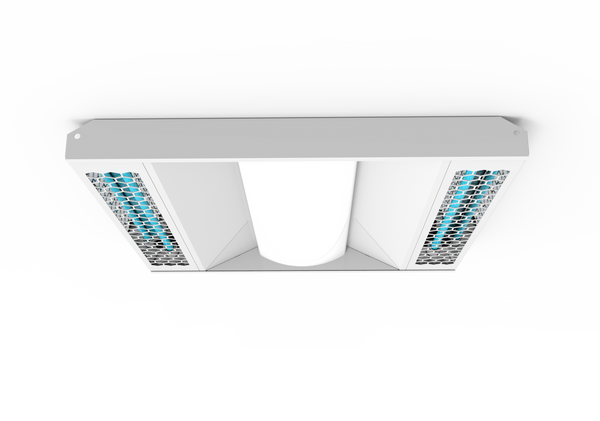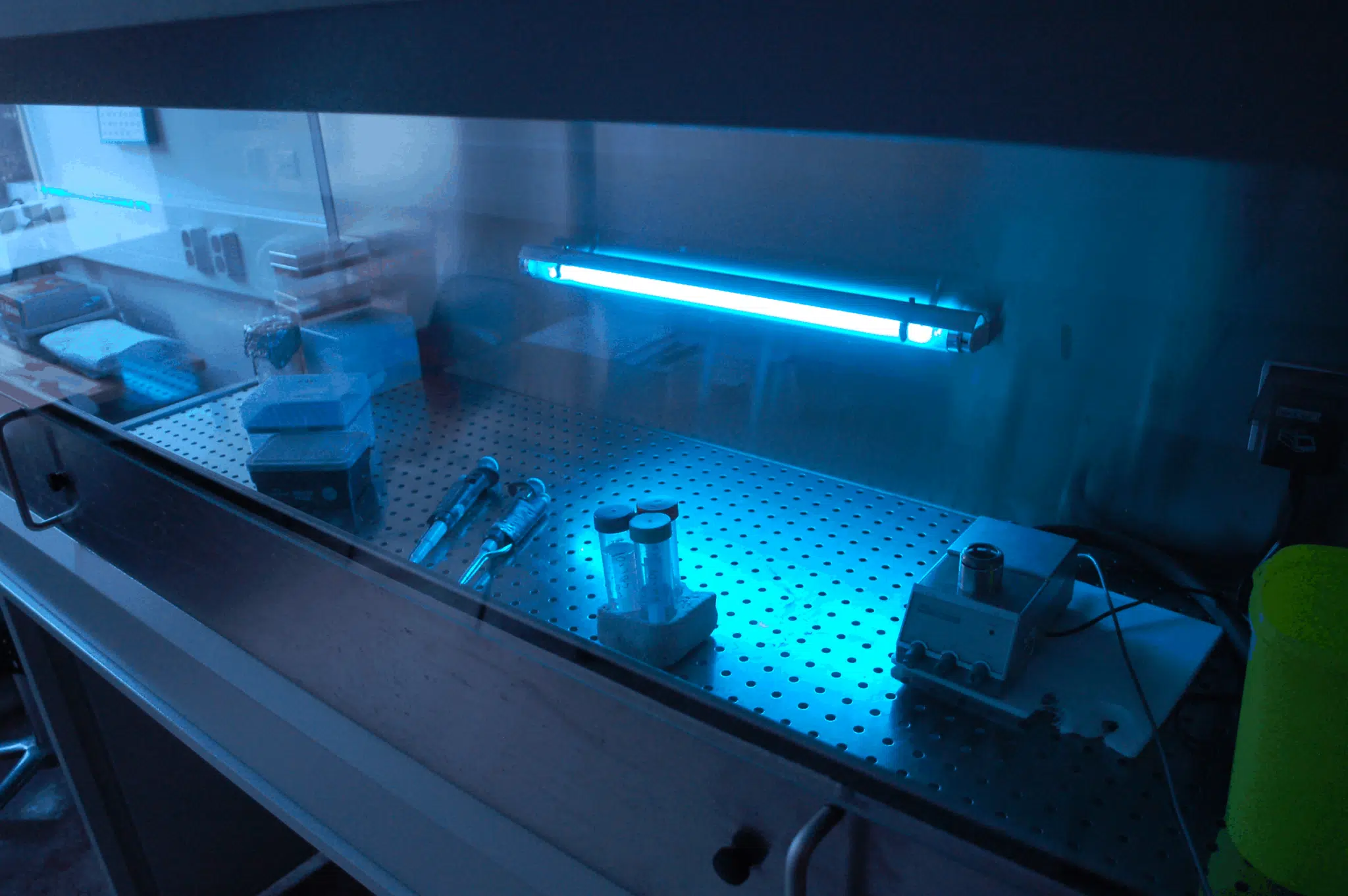Future-Proofing Your Space: Incorporating UV Surface Disinfection for Ongoing Protection
Future-Proofing Your Space: Incorporating UV Surface Disinfection for Ongoing Protection
Blog Article
Exploring UV Disinfection: A Necessary Tool in the Battle Against Hazardous Virus
As the globe deals with an ever-increasing risk from harmful pathogens, the search for efficient methods of sanitation has actually come to be an immediate priority. While typical cleaning methods have shown some success, there is a growing acknowledgment that we require to discover innovative strategies to battle these unnoticeable opponents. One such approach that has gathered substantial attention is UV disinfection. Utilizing the power of ultraviolet light, this modern technology has shown encouraging cause getting rid of a wide variety of pathogens. However how does it work? What are the advantages? And where can it be used? In this conversation, we will certainly look into the globe of UV sanitation, revealing its potential as an important tool in the fight versus damaging pathogens.
Exactly How Does UV Sanitation Work?
UV disinfection functions by making use of ultraviolet (UV) light to eliminate harmful virus and avoid their spread. This extremely efficient technique includes the usage of UV radiation to interfere with the DNA and RNA of bacteria, providing them unable to duplicate and triggering their ultimate damage.
When UV light is used for disinfection, it is normally emitted from a lamp or bulb that generates a certain wavelength of UV-C light. uv surface disinfection. This wavelength, varying from 200 to 280 nanometers, is especially effective at penetrating the outer cell wall surface of germs, viruses, and various other bacteria. When inside the cell, the UV radiation targets and damages the hereditary product, protecting against the microbe from causing and recreating infection
UV disinfection systems are created to produce the appropriate strength and duration of UV light to guarantee efficient pathogen elimination. The dose of UV light required for disinfection depends on elements such as the kind of microorganism, its resistance to UV radiation, and the details application. In addition, the system has to be carefully engineered to make certain proper exposure of the target microorganisms and to stay clear of any possible damage to humans or the environment.
The Benefits of UV Sanitation
UV disinfection offers a plethora of advantages in properly eliminating damaging pathogens and minimizing the risk of infection. One of the primary advantages of UV disinfection is its capacity to provide a chemical-free and eco-friendly remedy. Unlike traditional sanitation methods that depend on chemicals, UV disinfection makes use of ultraviolet light to damage the DNA and RNA of microorganisms, rendering them not able to recreate and create infections. This chemical-free technique makes sure that no dangerous residues are left behind, getting rid of any kind of potential health dangers related to chemical disinfectants.
An additional substantial advantage of UV sanitation is its effectiveness in eliminating a variety of pathogens. UV light has been shown to efficiently remove microorganisms, infections, fungi, and protozoa, including those that are resistant to conventional anti-bacterials. This broad-spectrum effectiveness makes UV sanitation a versatile tool in different settings, such as healthcare facilities, water treatment plants, and food processing markets.
In addition to its effectiveness, UV disinfection additionally offers fast sanitation cycles. Unlike various other approaches that call for extended get in touch with times or repeated applications, UV disinfection can attain significant microorganism reduction in an issue of seconds. This effective and quick process allows for improved efficiency, lowered downtime, and enhanced total operational efficiency.
In addition, UV sanitation is a non-contact technique, which indicates that it does not need direct physical contact with the surfaces or items being sanitized. This function makes it appropriate for use on fragile devices and sensitive products that may be damaged or influenced by various other sanitation techniques.
Applications of UV Sanitation in Medical Care

UV disinfection is additionally made use of in the sanitation of medical equipment and tools. Additionally, UV disinfection is used in water therapy systems within medical care facilities.
In addition, UV disinfection innovation is used in the sanitation of medical care uniforms and personal protective devices (PPE) By utilizing UV light, health care specialists can make certain that their attires and PPE are devoid of microorganisms, avoiding the transmission of infections in between individuals and medical care employees.
UV Sanitation in Public Spaces
Public spaces are significantly carrying out UV sanitation modern technology as a crucial step to battle the spread of unsafe virus. With the ongoing international pandemic and the continuous hazard of infectious diseases, click this the requirement for reliable disinfection methods in public locations has actually ended up being vital. UV disinfection offers a efficient and dependable remedy in this respect.

UV disinfection systems make use of ultraviolet light to shut down the DNA and RNA of germs, viruses, and other pathogens. This procedure interrupts their ability to reproduce and provide them harmless. These systems can be mounted in various public rooms, including heating and cooling systems, escalators, elevators, and surface sanitation robotics. Using UV disinfection innovation in public rooms not just assists in decreasing the risk of infection however likewise infuses self-confidence among the general public concerning their safety.
As public spaces proceed to adapt to the obstacles posed by contagious illness, UV disinfection modern technology plays a crucial function in making certain a clean and risk-free atmosphere. By applying such actions, public rooms can efficiently reduce the spread of hazardous virus and contribute to the overall wellness of the area.
The Future of UV Sanitation Innovation
As the need for boosted disinfection approaches remains to expand in reaction to the ongoing international pandemic and the constant hazard of contagious illness, the future of UV disinfection modern technology holds encouraging innovations in making certain much more effective and reliable pathogen elimination in different settings.

One location of innovation is the growth of more small and mobile UV sanitation tools. These devices would certainly enable less complicated and extra adaptable implementation in a variety of setups, such as workplaces, colleges, and transport systems. Furthermore, developments in automation and robotics are being explored to enhance the performance and efficiency of UV sanitation processes. This includes using autonomous robotics equipped with UV-C lights to navigate and disinfect large locations promptly and precisely.
An additional location of expedition is using UV sanitation in air filtration systems. By incorporating UV-C lights right into a/c systems, airborne virus can be efficiently counteracted, reducing the risk of find out transmission in indoor atmospheres.
Moreover, scientists are investigating making use of UV sanitation in food processing facilities to guarantee the safety and security and top quality of food. UV-C light has actually been found to be effective in removing foodborne virus, offering a chemical-free option to typical disinfection methods.
Verdict
In final thought, UV sanitation is an essential tool in the fight against harmful microorganisms. Its efficiency in killing germs, infections, and other microorganisms makes it a useful innovation in healthcare settings and public areas. With its capacity to give a ecologically pleasant and chemical-free method of sanitation, UV modern technology holds great prospective for the future. Its prevalent application can add to the prevention of infections and the enhancement of public health and wellness.
UV disinfection systems are designed to release the suitable strength and duration of UV light to make sure reliable pathogen elimination. The dosage of UV light needed view it for sanitation depends on aspects such as the type of microbe, its resistance to UV radiation, and the specific application. Unlike typical disinfection approaches that count on chemicals, UV sanitation utilizes ultraviolet light to ruin the DNA and RNA of bacteria, providing them incapable to reproduce and trigger infections.In addition to its efficiency, UV disinfection also offers fast sanitation cycles. One of the main applications of UV sanitation in healthcare is in the disinfection of client rooms and operating movie theaters.
Report this page